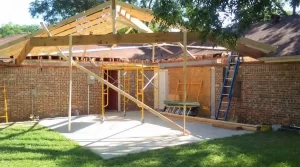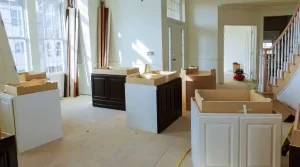In a world where a lot of headlines are filled with reports of heatwaves, power outages, extreme weather conditions, cold, and droughts, it’s clear that our climate is undergoing rapid changes, demanding a more environmentally conscious approach. This urgency extends to the construction industry, which holds a significant role in shaping a sustainable future.
According to recent studies by the Environmental Protection Agency (EPA), the scale of construction waste has become a pressing international concern. In 2018 alone, the United States witnessed the generation of a staggering 600 million tons of construction and demolition (C&D) debris. To put this into perspective, that’s more than twice the volume of waste generated by homes and businesses combined altogether.
It’s worth noting that the majority of this waste originates from demolition activities. While around 455 million tons of C&D debris, primarily aggregate materials, found their way into productive reuse, approximately 145 million tons were sent to landfills, contributing to environmental degradation.
Despite these challenges, the construction industry is taking meaningful strides towards positive change by focusing on the principles of “Reduce, Reuse, and Recycle.”
Reduce: Pioneering Efficiency and Waste Minimization
The advancement of modular construction techniques is revolutionizing efficiency and waste reduction. Prefabrication offsite allows for the creation of components with minimal waste, as they are built to precise specifications in a controlled setting. This predictability enhances installation precision, setting the rhythm for efficient project execution. Specialized tools and processes contribute to streamlined operations, ensuring that quality standards are met consistently and waste is kept to a minimum.
This approach aligns seamlessly with an industrialized scheduling methodology. The sequencing of assembly in a manufacturing style minimizes crew shifts, transportation, and heavy machinery usage. A meticulously planned delivery sequence ensures subcomponents are installed on schedule, optimizing construction waste management and overall project efficiency.
Recycle: Transforming Waste into Opportunity
Remarkably, many building materials are recyclable. A sustainability-driven mindset, exemplified by Compass, emphasizes the selection of materials with future repurposing in mind. Recycling asphalt, concrete, rubble, wood, and metals like steel and copper into valuable commodities contributes to waste reduction.
Recycling practices are tailored to each project, considering factors such as crew size and budget constraints. “Site separated” recycling involves on-site sorting, ideal for projects with a variety of easily sortable materials. On the other hand, “commingled recycling” streamlines waste disposal by allowing everything to be placed in a single container for later sorting. Compass, for instance, aims to limit construction material waste to no more than 10%, promoting eco-friendly practices for both green and brownfield sites.
Reuse: Embracing Adaptive Reuse
Retrofits and adaptive reuse projects are gaining traction, driven by aesthetic and sustainability considerations. Developers are restoring old structures, minimizing the need for new materials. Besides material cost savings, local governments often incentivize such projects through grants and special funds. Reusing old structures, often built with high-quality materials, can lead to impressive energy efficiency gains compared to constructing new houses and buildings.
In the data center industry, adaptive reuse has transformed disused structures like malls and power plants into functional data centers. This practice not only maximizes space utilization but also reduces construction material waste. This approach aligns with the broader shift toward a circular economy that emphasizes minimizing waste and ensuring resource longevity.
As we chart a path towards sustainability, architects and engineers should design buildings with adaptability in mind. Planning for disassembly and reuse reduces waste, energy consumption, and environmental impact. This approach allows materials to be effectively repurposed, contributing to a greener future.
Building a Circular Economy
The construction industry’s journey towards sustainability involves a shift to a circular economy, focusing on waste elimination and resource optimization. Embracing adaptive reuse, leveraging modular construction methods, and prioritizing recycling are vital steps in this transformative process. By designing structures for long-term use and adaptability, we can make a significant impact on waste reduction and lead the industry towards a more sustainable future.
As we forge ahead, let’s remember that sustainability isn’t just a choice—it’s a responsibility we all share to create a healthier, more environmentally conscious world. By adopting these principles, we can ensure a brighter future for the future generations to come.







